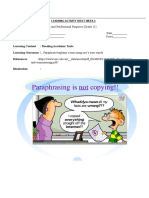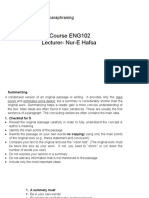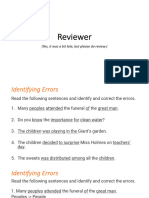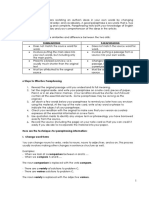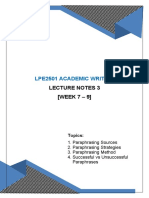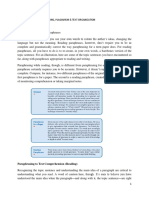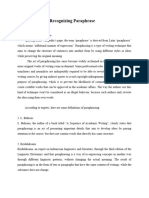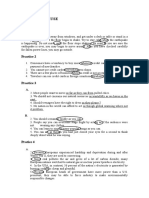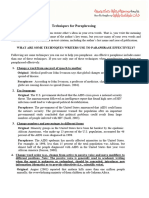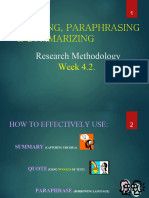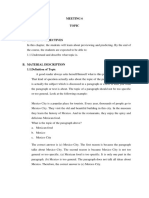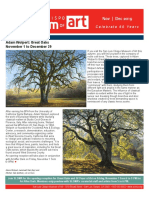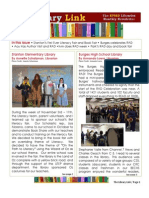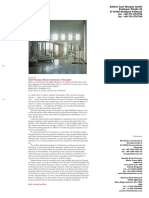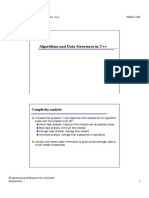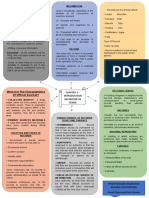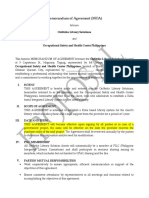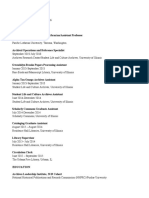Paraphrasing Exercises
6 Steps to Effective Paraphrasing
1. Reread the original passage until you understand its full meaning.
2. Set the original aside, and write your paraphrase on a note card, pieces of
paper, Post-it, or in an electronic manner. (Your rendition should be shorter,
but it should contain all the essential elements. Some paraphrases may be as
long as the original.)
3. Jot down a few words below your paraphrase to remind you later how you
envision using this material. At the top of the note card, write a key word or
phrase to indicate the subject of your paraphrase.
4. Check your rendition with the original to make sure that your version
accurately expresses all the essential information in a new form.
5. Use quotation marks to identify any unique term or phraseology you have
borrowed exactly from the source.
6. Record the source (including the page) on your note card so that you can
credit it easily if you decide to incorporate the material into your paper.
Exercise 1
Paraphrase each sentence. There may be more than one way to rewrite each one.
Remember to change vocabulary, phrases and sentence structure wherever you can.
Please use the author’s name and/or reference: John Smith 2023 (including page
number).
1. Despite their massive size, elephants are known for being agile.
2. Because elephants consume up to 500 pounds of food a day, they are
able to strip a forest bare in no time.
3. Over the centuries, lions have been used in art to represent power and
magnificence.
4. Lions are social animals with one dominant male in each pride.
� 5. George Washington Carver was a dedicated teacher, in addition, he
was known as a talented artist, musician, and researcher who made valuable
contributions to his people and his country.
6. Archibald McLeish, known for his poetry, was appointed head of the
library of congress by President Roosevelt in 1939.
Exercise 2
�Read each paragraph and state the main idea in your own words. If you find the
main idea stated directly in the paragraph, be sure to use the paraphrasing
techniques that you practice in exercise one. Author: John Smith, 2023.
1. There is plenty of water on the earth. In fact, there is enough water in
this planet for everyone to have a huge lake. The trouble is that the water is
not always found in the place where is needed. In addition much of the water
is polluted or salty. Because of these problems, there are many people
without sufficient water.
2. New oil supplies need to be found to replace those that have been
used up. There is a constant search for new oil fields. Oil hunters sink their
wells wherever there are signs of oil. Each of these drillings costs thousands
and thousands of dollars, and often there is not enough oil to make it
profitable. Nevertheless, the search for new oil never ends.
3. Quakers, a religious group known as the Society of Friends, have
always worked for human causes. Before the Civil War in the United States,
they were against slavery and led the movement to help salve escape from
the southern part of the United States and seek freedom in the northern part.
Today, they fight hunger and disease around the globe and still aid people
fleeing tyranny and war. Their beliefs are based on the principles of pacifism
and simple living.








